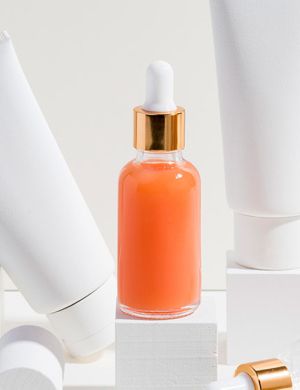
Understanding Global Cosmetics Testing Requirements: A Comprehensive Guide
In the competitive world of beauty and personal care, ensuring that your cosmetic products are safe for consumers is not just a moral obligation – it’s a legal requirement. The cosmetics testing requirements set by regulatory bodies around the globe are essential to ensure that products are safe, effective, and compliant with the various laws governing their use.
For brands looking to sell products in multiple regions, it’s critical to understand the nuances of testing requirements, which vary significantly from one market to another. From ingredient safety tests to product stability assessments, these requirements play a crucial role in the product lifecycle.
In this blog, we’ll dive deep into the cosmetics testing landscape, exploring what brands need to know to stay compliant and how tools like Vistaar’s Cosmetics Regulations Database can streamline the process.
Introduction to Cosmetics Testing Requirements
Cosmetic products, whether they’re skincare creams, makeup, or hair care solutions, need to be thoroughly tested before they hit the market. Regulatory authorities across the world have stringent cosmetics testing requirements in place to ensure that products are safe for human use and do not cause harm.
These tests include a variety of evaluations like product stability, safety for sensitive skin, microbial testing, and ingredient safety, all of which are key to gaining approval for distribution.
Why Is Cosmetic Testing Essential?
Cosmetic testing is vital for several reasons. First and foremost, it ensures that the products are safe for consumers. With consumers growing more concerned about the safety and transparency of the products they use, thorough testing helps build trust and enhances brand reputation.
Testing also ensures regulatory compliance. If a company fails to meet the required standards, it may face severe consequences, including product recalls, fines, or a complete ban in certain markets. Testing provides an opportunity to avoid these costly errors by detecting potential safety issues early on.
Overview of Global Regulatory Authorities
Various international regulatory bodies govern cosmetic testing requirements, and each one has its own standards. Here are some key regulatory authorities:
- FDA (United States): The U.S. Food and Drug Administration oversees the safety of cosmetic products in the American market, focusing on product labeling and ingredient safety.
- European Commission (EU): The European Union’s Cosmetics Regulation (EC) No 1223/2009 strictly controls the safety and efficacy of cosmetics sold within the EU.
- Health Canada: Ensures that cosmetic products sold in Canada comply with health and safety regulations.
- MHLW (Japan): Japan’s Ministry of Health, Labor, and Welfare (MHLW) regulates cosmetic ingredients and product approval.
Each region has its own specific cosmetics testing requirements, which must be followed to ensure market entry and continued compliance.
Key Cosmetics Testing Types and Their Importance
There are several categories of cosmetics testing, each of which serves a specific purpose. The most critical tests include:
- Stability Testing: Ensures that the product maintains its intended function and appearance throughout its shelf life.
- Microbial Testing: Detects harmful microorganisms that could compromise product safety.
- Safety Assessments: Evaluates the potential toxicity and irritation caused by product ingredients.
- Efficacy Testing: Proves that the product delivers on its claims, such as anti-aging benefits or moisturizing effects.
These tests are not just necessary for regulatory approval—they also help to maintain brand integrity and consumer trust.
Animal Testing vs. Alternatives: The Global Shift
One of the most significant debates in cosmetic testing revolves around the use of animal testing. Historically, animal testing was a common method to assess product safety, but growing ethical concerns have led many countries to ban or restrict this practice.
Alternatives to Animal Testing:
- In vitro testing: These are lab-based tests on human cells or tissues, offering a cruelty-free alternative.
- Computer-based modeling: Advanced simulations that predict a product’s potential risks without animal use.
Countries Banning Animal Testing:
- European Union: Animal testing for cosmetics has been banned since 2013.
- India: Enforced a ban on cosmetic animal testing in 2014.
- Brazil: Some states in Brazil have enacted their own bans on animal testing for cosmetics.
However, some regions, such as China, still require animal testing for certain product categories. Brands must navigate these differing requirements carefully.
Specific Testing Requirements in Key Markets
Let’s take a look at some of the specific testing requirements across various global markets:
United States:
- The FDA doesn’t specifically require animal testing but mandates that all products must be safe for consumers.
European Union:
- EU cosmetics must pass stringent safety assessments, and animal testing is entirely prohibited.
China:
- Imported cosmetics must undergo mandatory animal testing, although the rules are evolving, and some exemptions have been introduced for non-special use cosmetics (such as shampoos and lotions).
The Role of Ingredient Safety Assessments
Before a cosmetic product is released, it must undergo thorough ingredient safety assessments. This ensures that each ingredient in the product meets the legal standards for safety and does not cause adverse reactions when applied to the skin.
Regulatory bodies typically maintain a list of restricted or prohibited ingredients that cannot be used in cosmetic formulations. Brands need to perform regular checks against these lists to ensure compliance.
Product Stability Testing: Ensuring Shelf Life
Stability testing is designed to determine how long a product can be stored before it begins to degrade. A cosmetic product must maintain its intended quality, efficacy, and safety throughout its shelf life.
This testing is particularly important for ensuring that the product can survive different climates, exposure to light, and varying temperatures without spoiling or becoming ineffective.
Microbial Testing: Protecting Consumer Health
Microbial testing ensures that a cosmetic product is free from harmful bacteria, fungi, and yeasts that could pose a risk to consumer health. Since cosmetics often come into direct contact with the skin, the risk of microbial contamination is high, especially for products containing water.
Testing helps verify that products meet acceptable microbial limits and remain safe during use.
Human Safety and Sensory Testing
Some markets also require human testing to assess the safety and sensory properties of a product. This includes:
- Patch Testing: To identify potential allergic reactions or irritants.
- Sensory Testing: To evaluate how the product feels on the skin, its fragrance, and its overall user experience.
These tests are crucial for meeting consumer expectations and regulatory demands.
Documentation and Compliance: What You Need to Track
Ensuring compliance with cosmetics testing requirements involves more than just conducting the tests. Brands must also maintain detailed documentation of their testing protocols, results, and ongoing monitoring.
Key documents include:
- Ingredient safety data
- Test reports for stability, microbial, and safety assessments
- Batch records ensuring consistent quality across production
These records are critical for regulatory inspections and audits.
Common Challenges in Meeting Testing Requirements
Brands face several challenges when it comes to meeting cosmetics testing requirements:
- Varying Global Standards: Testing requirements differ significantly between countries, making it difficult for brands to standardize their approach.
- Cost of Testing: Comprehensive testing can be expensive, particularly for small businesses.
- Animal Testing Restrictions: Navigating the balance between complying with markets that ban animal testing and those that mandate it, like China, can be complex.
The Importance of Staying Updated with Regulatory Changes
Cosmetic regulations are continually evolving. For example, the EU regularly updates its list of banned ingredients, and China has made significant strides in reducing mandatory animal testing. Brands must remain vigilant to stay compliant.
Subscribing to a cosmetic regulations database that offers real-time updates can help brands stay informed about these changes and adjust their practices accordingly.
Vistaar’s Role in Simplifying Cosmetics Testing
Vistaar’s Cosmetics Regulations Database is an essential tool for brands navigating the complex world of cosmetics testing. It provides:
- Real-time updates on global testing requirements.
- Ingredient safety assessments that ensure compliance with international standards.
- Step-by-step guidance for meeting testing requirements across various markets.
By leveraging Vistaar’s database, brands can save time, reduce costs, and ensure that their products meet the necessary safety and regulatory standards.
Conclusion: Ensuring Safe and Compliant Cosmetics
Navigating the cosmetics testing requirements in today’s global market is no small feat. With varying standards, evolving regulations, and the push for cruelty-free alternatives, brands must stay informed and proactive. By understanding the key testing requirements and utilizing tools like Vistaar’s Cosmetics Regulations Databas
Don’t miss out! Click here to stay in touch.
Categories
- Biopharma (58)
- Consumer Health (21)
- Cosmetics (11)
- Diagnostics (5)
- Digital Health (8)
- Food (2)
- Medical Device (112)
- OTC (5)
- Regulatory Intelligence (13)
- Standards (41)
Recent Blogs
Get the latest updates from Vistaar

CONNECT WITH US

Let's talk about how Vistaar can help you




